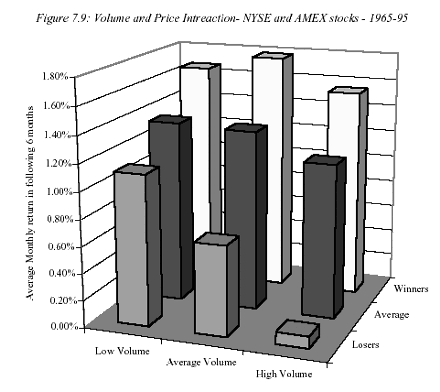
Foundations of Technical Analysis: What are the assumptions?
(1) Price is determined solely by the interaction of supply & demand
(2) Supply and demand are governed by numerous factors both rational and irrational. The market continually and automatically weighs all these factors. (A random walker would have no qualms about this assumption either. He would point out that any irrational factors are just as likely to be one side of the market as on the other.)
(3) Disregarding minor fluctuations in the market, stock prices tend to move in trends which persist for an appreciable length of time. ( Random walker would disagree with this statement. For any trend to persist there has to be some collective 'irrationality')
(4) Changes in trend are caused by shifts in demand and supply. These shifts no matter why they occur, can be detected sooner or later in the action of the market itself. (In the financial economist's view the market (through the price) will instantaneously reflect any shifts in the demand and supply.
On why technical analysts think it is futile to estimate intrinsic values
"It is futile to assign an intrinsic value to a stock certificate. One share of US Steel , for example, was worth $261 in the early fall of 1929, but you could buy it for only $22 in June 1932. By March 1937 it was selling for $126 and just one year later for $38. ... This sort of thing, this wide deivergence between presumed value and intrinsic value, is not the exception; it is the rule; it is going on all the time. The fact is that the real value of US Steel is determined at any give time solely, definitely and inexorably by supply and demand, which are accurately reflected in the transactions consummated on the floor of the exchange.” (From Magee on Technical Analysis)
The Counter Response
Of course, the statistics which the fundamentalists study play a part in the supply and demand equation- that is freely admitted. But there are many other factors affecting it. The market price reflects not only the differing fears and guesses and moods, rational and irrational, of hundreds of potential buyers and sellers.. as well as their needs and resources- in total, factors which defy analysis and for which no statistics are obtainable but which nevertheless are all synthesized, weighted and finally expressed in the one precise figure at which a buyer and seller get together and make a deal. This is the only figure that counts.
Are investors rational?
Historians who have examined the behavior of financial markets over time have challenged the assumption of rationality that underlies much of efficient market theory.
They point out to the frequency with speculative bubbles have formed in financial markers, as investors buy into fads or get-richquick schemes, and the crashes with these bubbles have ended, and suggest that there is nothing to prevent the recurrence of this phenomenon in today's financial markets. There is some evidence in the literature of irrationality on the part of market players.
Prof. Aswath Damodaran
Next: A Sobering Thought for Believers in Rationality
Summary: Index